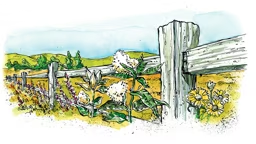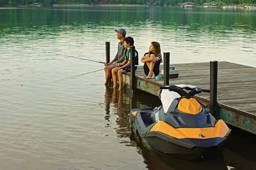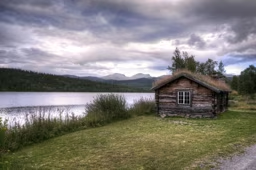The most economical way to remove calcium and magnesium (the “hard” ions) is to install a water softener. Softeners use a salt solution to replace the calcium and magnesium with sodium, through a process called ion exchange. Softeners will also remove iron to a certain degree; a water quality professional from a water softening company can do a quick (and usually free) test to determine if additional iron treatment is necessary.
If you plan on using a lot of softened water at your cabin (i.e., you have a washing machine, or take more than 100 showers per year at the cabin) you may want to consider a custom-built softener. The initial cost will be at least double, but the average life span will probably triple. And you also have the benefit of custom-tuning your softener to match your water needs.
Regardless of the type of water softener you install, there are a few things you can do to get the most out of your softener:
1 Keep the Dirt Out
Fine suspended sediments are common in both city and well water supplies. These sediments can work their way through piping and to your water softener, where they will clog the resin column – the same thing that replaces the calcium and magnesium with sodium. Sediment build-up makes your softener less effective, and can also foul the resin column and dramatically shorten your softener’s lifespan.
Be sure to install a sediment filter on the inlet side of the softener (most of the high-end softeners have built-in filters). Another source of sediment is inferior quality salt crystals – most cheaper brands are inherently dirtier than the premium grade salt crystals.
2 Softer Isn’t Always Better
Softened, sodium-enriched water isn’t always as tasty for drinking as hard water, and repeated watering of the lawn or flower gardens with softened water isn’t a good idea.
Consider branching off your hard water line before the softener and running the line to an outdoor faucet. Some people also run a line to their sink for a drinking water supply.
3 Install your Reject Line Correctly
All softeners have a reject cycle, in which briny water is flushed from the tank and into your sewer system. You can reduce the volume and concentration of the brine discharge by choosing a water softener that has its regeneration cycle regulated by flow (demand-initiated regeneration) rather than by a timer. This will ensure that your septic tank – and your nearby lake or river – are exposed to as little salt as possible.
Resist the temptation to let the salty reject water run onto your lawn; it can have a harmful effect on your grass and the lakeshore that’s just downstream. (For more on septic systems and water softeners, see the sidebar below.)
Also, be sure there’s an air gap between the reject line and the floor drain inside your cabin – this prevents sewage from backing up into your water supply.
Kurt Anderson is a DIY plumber who’s learned that the best hard water at the cabin is usually in cube form inside a glass on a hot summer day.
The Briny Water Debate
The proper disposal of softener reject water has been the subject of much debate over the years. Reject water contains high levels of sodium and chlorides, and some people feel these “reject” ions could harm the septic system.
There’s little doubt salt (sodium chloride) can be detrimental to living organisms. Chloride is the biggest concern; in high concentrations, it’s toxic to bacteria, vegetation and freshwater organisms. And sodium can interact with soil particles, reducing the porosity of your drain field.
However, many experts point to numerous studies that have shown no negative effect of reject water, given a properly installed softener and a healthy septic system. Others disagree, and a few states actually require the briny water to be sent to a separate wet well, where it won’t affect the septic tank bacteria or the drain-field soils.
Bottom line: A typical cabin septic system receives minimal amounts of reject water, and in all likelihood, the tank bacteria and drain-field soils won’t be affected by an occasional slug of brine. But for cabins with high water-use practices (e.g., from using dishwashers and/or washing machines), professional installation of a separate wet well is probably your best bet.








